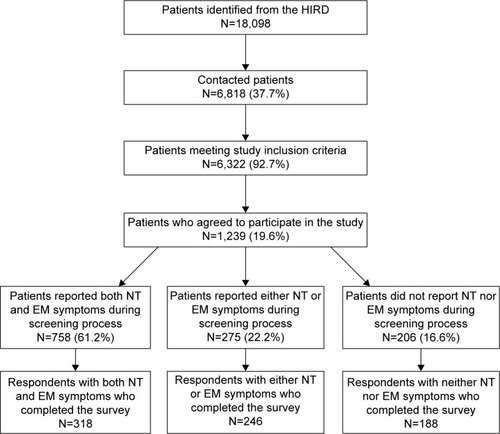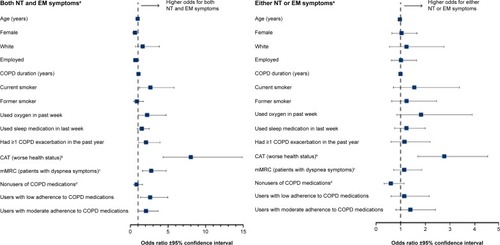Figures & data
Figure 1 Flow chart of survey respondents.

Table 1 Demographic and clinical characteristics of survey respondents
Table 2 Type, severity, and impact of NT symptoms
Table 3 Type, severity, and impact of EM symptoms
Figure 2 Factors associated with NT and/or EM symptoms in patients with COPD.
Abbreviations: CAT, COPD Assessment Test; COPD, chronic obstructive pulmonary disease; EM, early morning; MMAS, Morisky Medication Adherence Scale; mMRC, modified Medical Research Council; NT, nighttime.

